Can you train a cat?
A common misconception a lot of people have is that it is impossible to train a cat. That is simply not true. If done correctly, cats are very receptive to any natural forms of training. Find out in this article how to best train your feline friend.
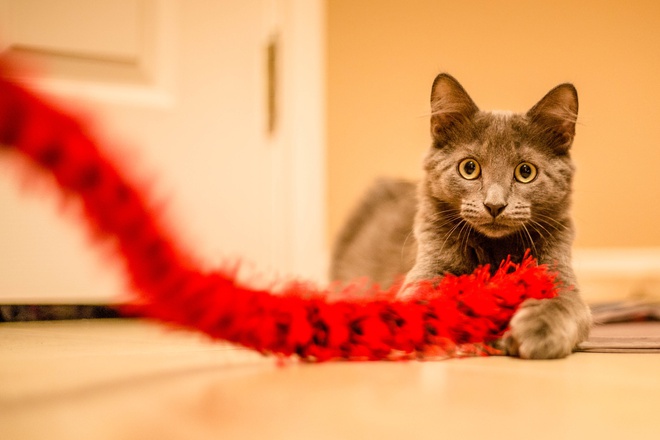
Reading time : 8 min
A popular belief is that you cannot train a cat. For a lot of people, cats are independent, devious, cunning, manipulative, and opportunist creatures. Based on these assumptions, cats would not be ideal for training.
But all of this comes from a misunderstanding of cats’ behaviour. You need to understand it first and keep in mind that you cannot train a cat the same way you would a dog. Cats are curious, alert, affectionate and playful, making them very receptive to training.
While kitten training can be of some benefit, it is not a requirement. So, can you train a cat? Certainly! How can you train a cat? First, you have to understand your furry friend, know their deep nature, and not want to change it at all costs.
The myth of the untrainable cat is easily dispelled if the owner is ready to understand their cat. As soon as you understand that the cat does not obey an order but follows a routine, everything becomes possible. The only prerequisite is that the cat has been properly socialised.
TOPICS
The importance of socialisation in kittens
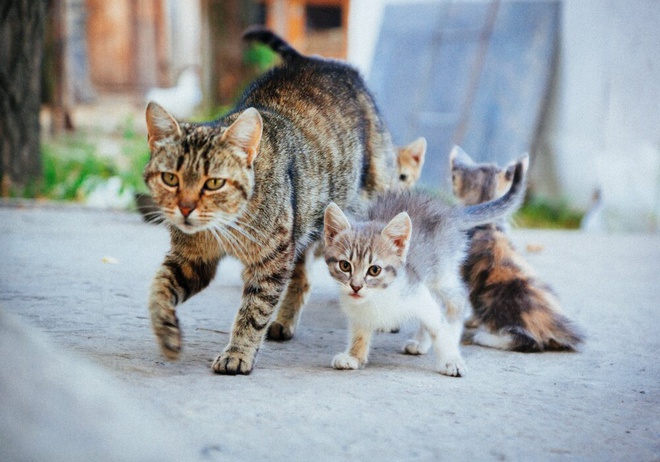
If you have adopted your cat as a kitten or are interested in adopting a young cat, you must have heard about the infamous socialisation phase. Socialisation is the foundation of the cat's psychological balance and behaviour.
The role of the mother
Kittens are born without sight or hearing but rely on smell to find their mother. Her presence reassures them and teaches early responses, much like mat training later. For the first 4 weeks, kittens depend fully on their mother, even though they open their eyes on day five and can see clearly by day 15. She feeds, cleans, warms and disciplines them, creating the first training plan for survival skills. Like with puppies, weaning starts at the end of the first month. This first independence shift, like planned meals in cat training, prepares kittens for solid food and structure.
The role of the breeder
The breeder softens kibbles and gradually shifts kittens to solids. By mimicry, they learn codes, much like clicker training helps shape behaviour later on. When kittens start moving, they will learn by mimicry, cleanliness, codes, and behaviours specific to the species, by observing their mother. The games between the kittens and their mother are still used for learning.
It is precisely during this time, kittens learn to control scratching and biting. This stage links to treats and rewards used in cat training tools to encourage proper behaviour. This phase of mutual attachment between the cat and her kittens is essential for their proper psychological development.
Breeders stay in the background at first, where they interact with kittens but mainly manage the mother’s well-being and start building a gentle training plan. They step in after 2 months. It is the breeder’s task to expose kittens to daily noises and people. For example, a cat that has not been exposed to the noise of the hoover will at best hide and at worst become aggressive. Later, food puzzles, snuffle mats or a harness kit help continue this training at home.
Training a cat
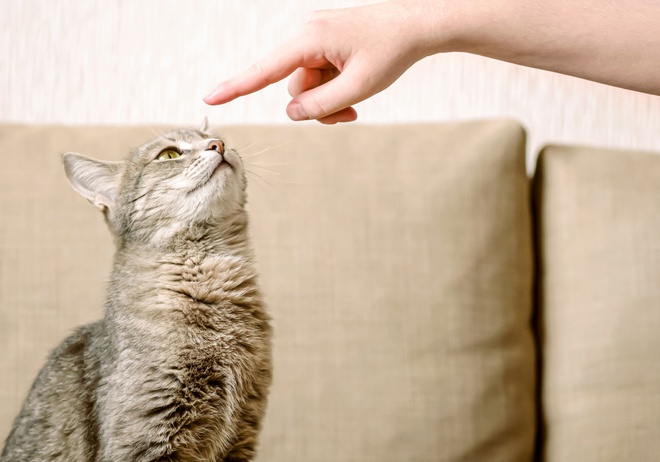
Unlike dogs, cats are not known for being very sociable. Cats are territorial animals that strive to live in a safe territory, where they feel good, respected, and safe.
If not, they may become anxious, very aggressive or leave to find a new, more peaceful environment. That is why it is important to establish a healthy relationship with your animal, training being one of the solutions.
Banning the Alpha dog method
The Alpha dog method does not work with cats. Aggression, shouting, or punishment only create fear. Use positive reinforcement instead. If a cat feels abused, they may develop stress behaviors like claw biting or licking. Short training sessions with training treats are safer and effective.
Gentle tools like clicker training or a cat school clicker training kit help build trust. Combine them with voice cues, hand signals, or luring. For behavior issues, try counter-conditioning or target training with a target stick. Offering scratching posts also redirects energy positively.
How to correct a cat's behaviour
It is often best to use tricks to get your cat to be well-behaved. There are ways to divert their attention.
Buying a plant of catnip
If the cat has got into the habit of nibbling on the plants in the house, it is possible to buy a plant of catnip, which cats are particularly fond of. You can also plant it yourself. This is a very simple way to save plants but also to take care of your cat's health, as some plants can be toxic to cats.
Using a cat flap
Cats always seem indecisive when it comes to coming and going out of the house. And the meowing of a cat that wants to go out or the repeated scratching if they want to come in can quickly become unbearable.
Using a cat flap can be beneficial, especially since they have evolved a lot. It is no longer a question of seeing all the cats in the neighbourhood making themselves comfortable in your kitchen.
Some cat flaps are connected to your cat's ID chip and will only let them in. Similarly, for their safety and the peace of mind of their owners, it is possible to pre-programme exit times.
Using the smell of olives
Did you know that the smell of olives has a euphoric effect on cats? Why not use them to help you save curtains, sofas, and doors? Just buy a scratching post and rub them with an olive stone or a cloth soaked in olive juice.
Preferring the cooperative method
Cats respond best to cooperative learning and positive reinforcement. Short training sessions with treats build trust and reduce stress. Using clicker training or a cat school clicker training kit helps encourage progress. Pair rewards with voice cues or simple hand signals.
Techniques like luring and counter-conditioning redirect unwanted habits. A target stick is useful for target training and guiding movements. Cat toys and training treats keep sessions fun. Offering scratching posts as rewards also prevents furniture damage and supports healthy behavior.
10 questions to test your pet training knowledge
Do you know everything there is to know about training dogs and cats? Answer our 10 questions to find out!
Tricks to teach your cat
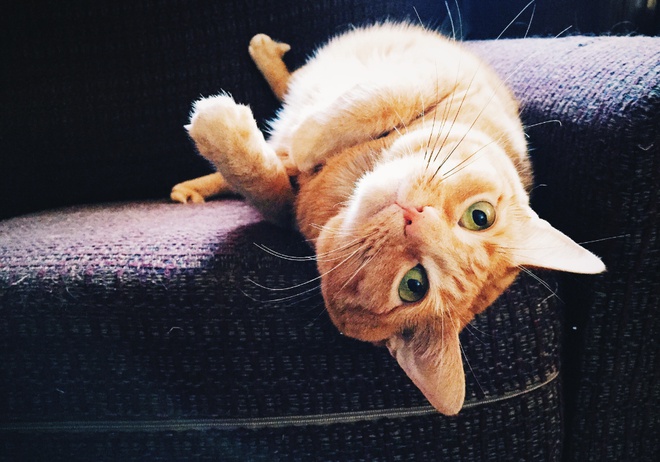
Teach them their name
When you adopt a kitten from a breeder, litterbox habits are already learned. What matters is to prepare the right cat training tools before starting.
The first trick you can teach a kitten is their name. Use treats, repeat often, and build a simple training plan with short daily sessions.
Teach your cat recalls
Next, teach recalls with clicker training or reward cues. Try calling your cat by their name, while shaking treats several times a day to reinforce learning.
If the cat does not respond, go to them, reward, and restart. Add mat training or snuffle mats as training materials to keep progress fun.
This process should also include a harness kit, since cats love to explore. Training them early makes walks safer and prepares them for outdoors.
Cats will want adventures. Using a GPS collar reduces stress of losing a pet. Furthermore, It is even possible to train your pet with a GPS collar. The GPS collar contains a recall option. Simply activate the collar's vibrator when it's time to eat. A planned meal or feeding schedule linked with the tracker helps recall.
You can even train your cat with food cues. Link the collar vibration to meals. Over time, the cat learns to come when it’s dinner time.
Train your cat to use a cat flap
Start with positive associations. Play or leave food puzzles near the flap. Encourage curiosity with small rewards during each step.
Hold the flap open and call the cat from the other side. Chair training or placing toys nearby helps create playful confidence.
Repeat this training daily for a week. Never force them. As your kitten gets used to the flap, they’ll open it themselves with ease.
Gradually, they will master the movement. With consistency and clear goals, your training plan helps cats enjoy freedom safely.
How to train a feral kitten?
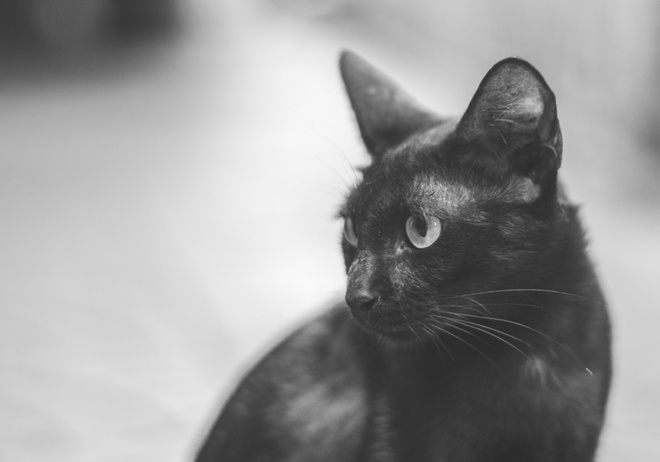
It can be harder to train an unweaned kitten. But with positive reinforcement, patience, and care, it is possible to teach them good habits.
Acting like a mother
Besides feeding, you must mimic the mother by keeping them warm and safe. Use gentle play and avoid destructive behavior by redirecting bites and scratches.
To manage unwanted scratching, guide the kitten toward a scratching post or varied scratching surfaces instead of furniture. Praise calm play to build trust.
After each meal, use a wet cloth to mimic cleaning, then place the kitten in the litter. This helps avoid stress and limits destructive chewing or accidents.
The risk of hyper attachment
Even with care, some kittens may develop anxiety or hyper attachment. A cat behavior consultant can suggest tools like calming sprays or training.
A cat trainer may also recommend clicker training or a cat tree to reduce counter surfing and to redirect energy in a safe, structured way.
Cat breeds easiest to train
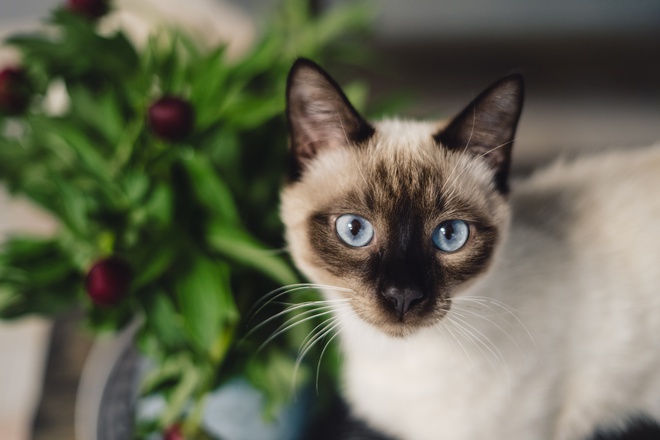
All breeds of cats can be trained. Some, however, may have more distinct predispositions such as intelligence, curiosity, a taste for play or simply a special affection and attention for their owner that would make training easier. These are undeniable qualities for a successful cooperative education. Among these breeds of cats, we find:
The Abyssinian cat and the need for stimulation
The Abyssinian is known to be a very intelligent, agile, dynamic and well-balanced cat. The Abyssinian cat is very close to their owners and enjoys interacting with them. This cat breed also needs to be kept busy and enjoy being mentally stimulated through play.
The Siamese cat, a talkative and communicative cat
Siamese cat owners are unanimous: these cats are very attached to their owner and particularly like to be the centre of attention. They are active and curious and like to play as long as their owner is involved. It is said that the Siamese cat is a “dog cat”. This means that natural training should not be a problem for Siamese owners.
The Bengal cat, a very intelligent cat
The Bengal is a particularly intelligent cat that is attentive to their surroundings. They can be active and playful as well as gentle and affectionate. Cooperative training should be quite exciting for this cat who likes to be stroked and praised.
The Burmese cat, thriving off of positive reinforcement
The Burmese cat is always looking for recognition and will strongly appreciate the rewards and petting that come with natural training. But this cat is also curious, intelligent, docile and loves it when their owner takes the time to play with them.
The Cornish Rex cat, a born player
The Cornish Rex is a very athletic cat, but above all, a tireless player. They love to spend time with their owners, so much so that some of them seem to enjoy walking around on a lead.
The Savannah cat, a sociable cat
With their wild appearance reminiscent of the cheetah, the Savannah is a very sociable cat that easily gets attached to their family. Naturally spirited, active, enthusiastic, and extremely playful, they have a great need to exercise with praise and rewards.
The Scottish Fold cat, an affectionate cat
The Scottish Fold is very curious and likes to be stimulated during play sessions. They enjoy their owner's company, affection, and petting.
Conclusion
Training a cat is not as easy as training a dog, but it is doable. However, it is possible to train a cat if you are lenient and respect the cat's nature. That said, the cat's education takes over from socialisation, which must necessarily be successful. If coercive training does not produce the desired results, the natural method and conditioning are truly effective.
Finally, some breeds of cat seem to have mental aptitudes, a strong taste for play or curiosity that predispose them to cat training, but in reality, all cats are receptive to cat training as long as their owners are gentle and show patience.
Continue reading our guide
This article is a part of a complete guide on the subject. Do not miss the next chapters.
Do you know everything there is to know about training pets?
Answer our 10 questions to test your pet training knowledge.
